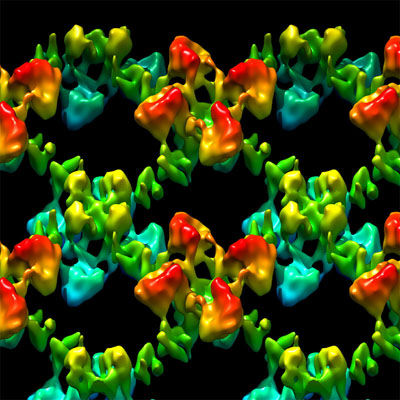New discovery solves problem of anti-inflammatory substance
Advertisement
There have been great expectations regarding the production of a drug to block the enzyme LTA4 hydrolase, which plays a key role in the body's inflammatory response. However, in clinical trials, such molecules have proven to be only moderately effective. Now, researchers at Karolinska Institutet have successfully refined their understanding of why previous substances have been less effective – and in so doing have produced a molecule that gets around the problem. Consequently, there is once again hope of a new anti-inflammatory drug based on the principal of blocking LTA4 hydrolase, which could provide relief in diseases such as COPD, the vascular disease arteriosclerosis and chronic eczema.
The enzyme LTA4 hydrolase has two functions. One is to produce LTB4, which contributes to the inflammatory reaction. The other is to inactivate the tripeptide Pro-Gly-Pro, which is formed during degradation of connective tissue and which also contributes to inflammation. In the first pathway, the enzyme LTA4 hydrolase evokes an inflammatory process, while it contributes to healing in the second.
"It could be considered remarkable that the same enzyme has two activities that are completely opposite. But this is more understandable if you look at it over time: in the first stage, the enzyme creates inflammation at the site of an injury, thus attracting white blood cells, and in the second stage it contributes to healing by inhibiting the inflammation," says Jesper Z. Haeggström, Professor of Molecular Eicosanoid Research in the Department of Medical Biochemistry and Biophysics at Karolinska Institutet.
Previous attempts to produce an anti-inflammatory drug that blocks LTA4 hydrolase have knocked out both of these functions. This is probably why the effects have so far been only moderate. Using x-ray crystallography to study LTA4 hydrolase, Jesper Z. Haeggström and his colleagues have been able to demonstrate that the formation of LTB4, which contributes to the inflammatory process and the inactivation of Pro-Gly-Pro, takes place at different parts of the enzyme's active site – the part of the enzyme used for biochemical communication.
They have used this information to produce a molecule that inhibits LTA4 hydrolase from producing LTB4, while the inactivation of Pro-Gly-Pro is maintained. This means that LTA4 hydrolase acts as an anti-inflammatory in both pathways; awakening new hopes of producing a drug that acts on this enzyme.
In the long-term, the researchers believe that a drug based on their molecule could be used to treat COPD (chronic obstructive pulmonary disease), arteriosclerosis and various types of inflammatory skin disease such as chronic eczema.
Original publication
Alena Stsiapanava, Ulrika Olsson, et al., 'Binding of Pro-Gly-Pro at the active site of leukotriene A4 hydrolase and development of an epoxide hydrolase selective inhibitor', PNAS, online early edition 3-7 March 2014.


















































